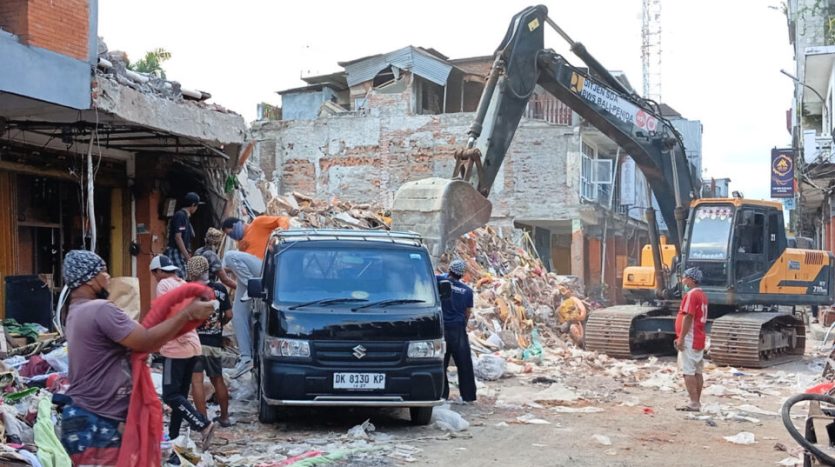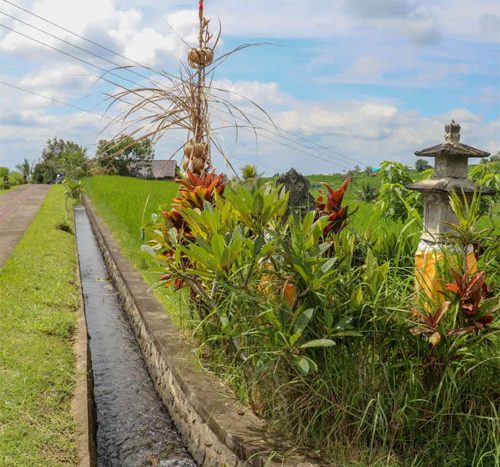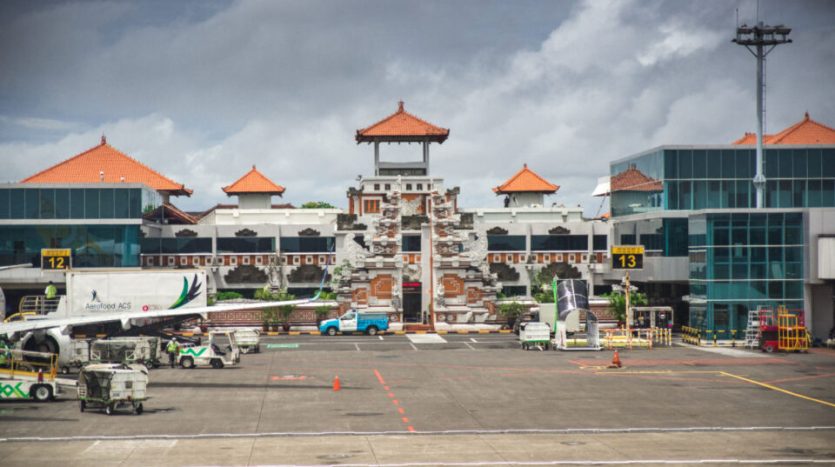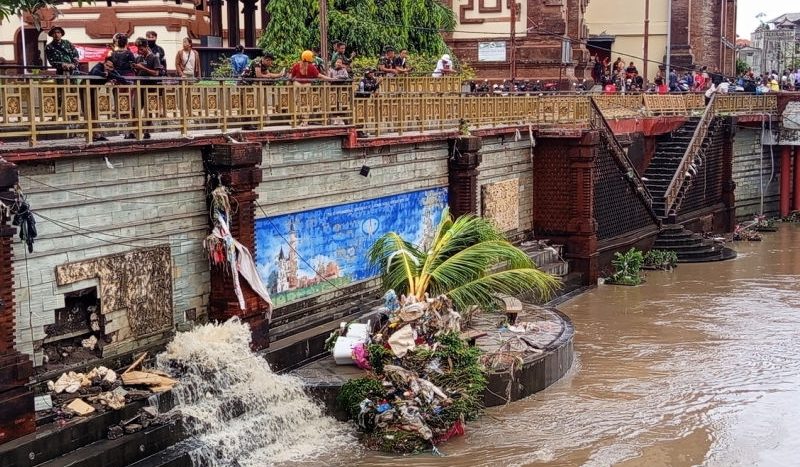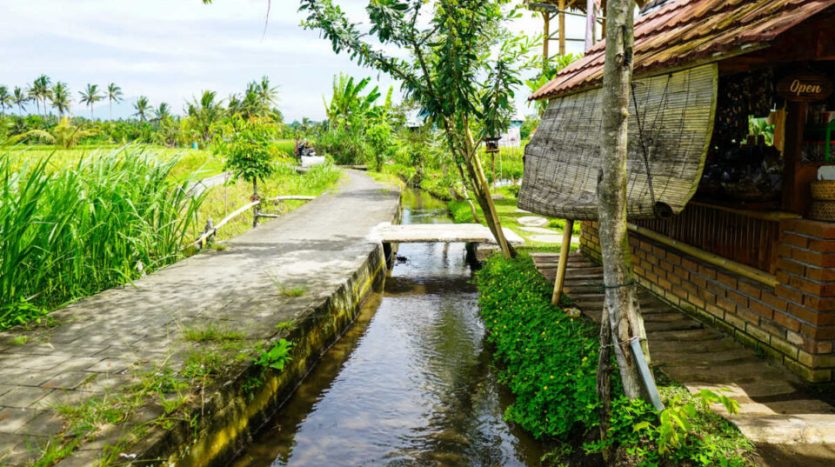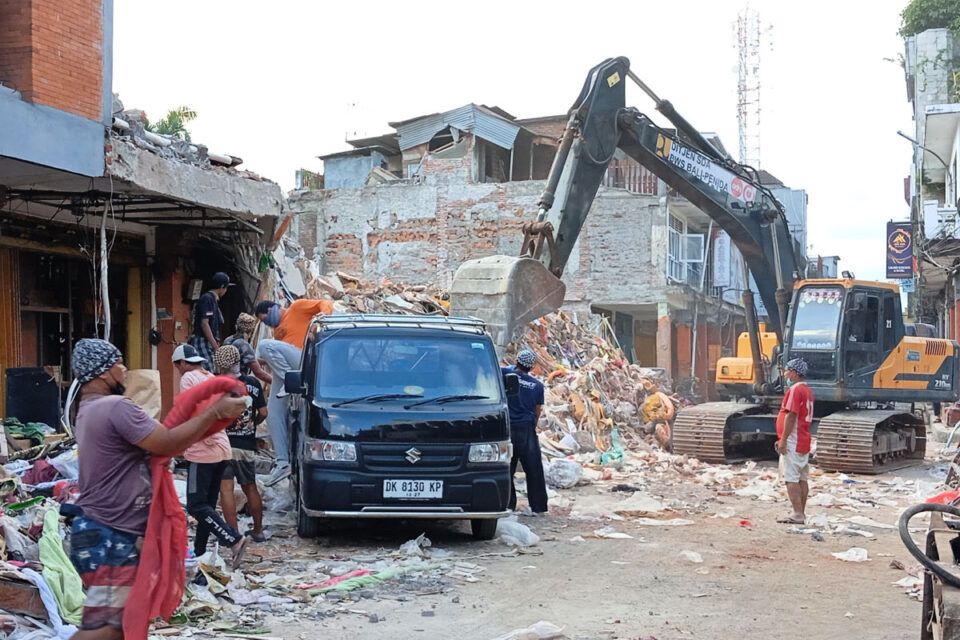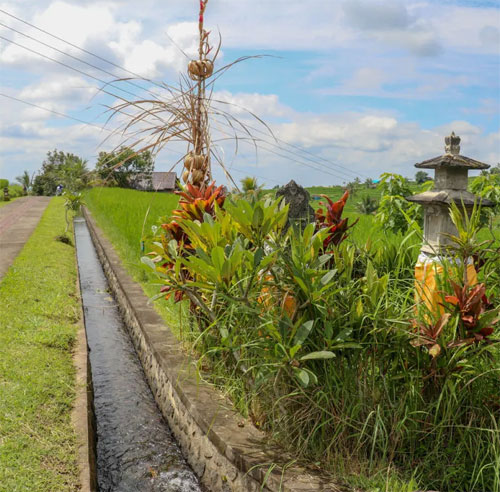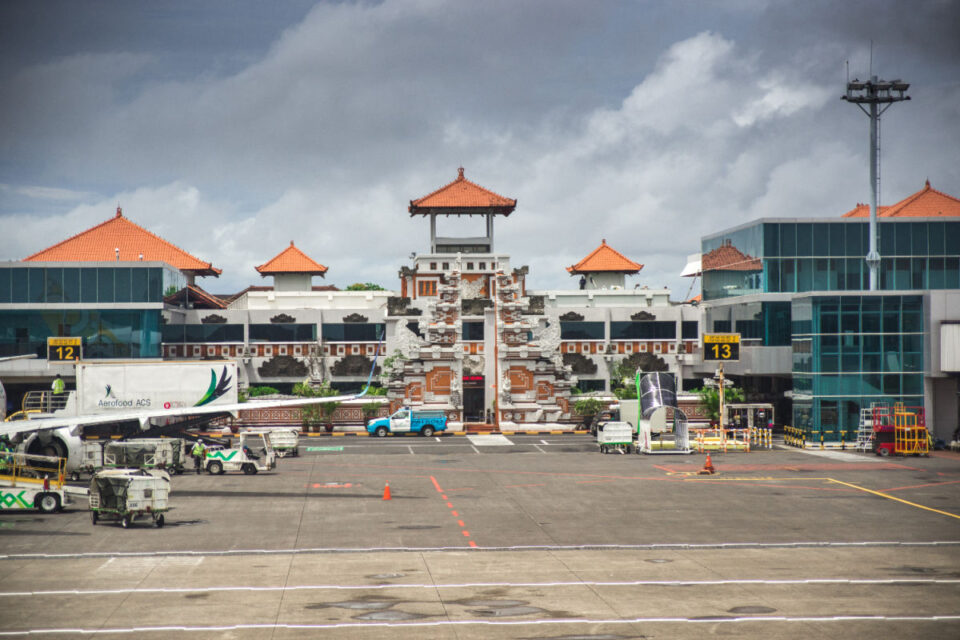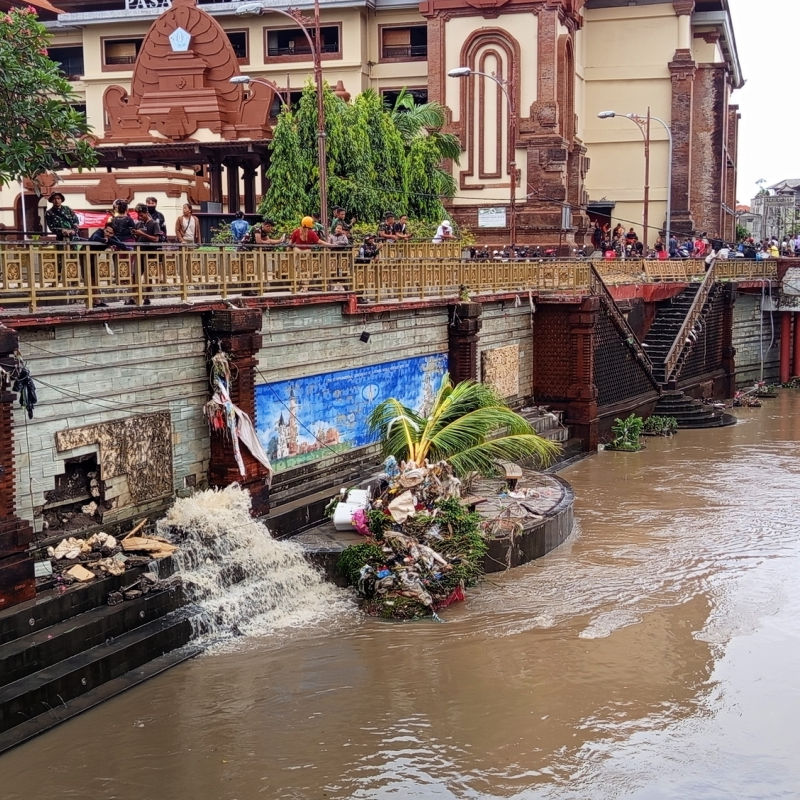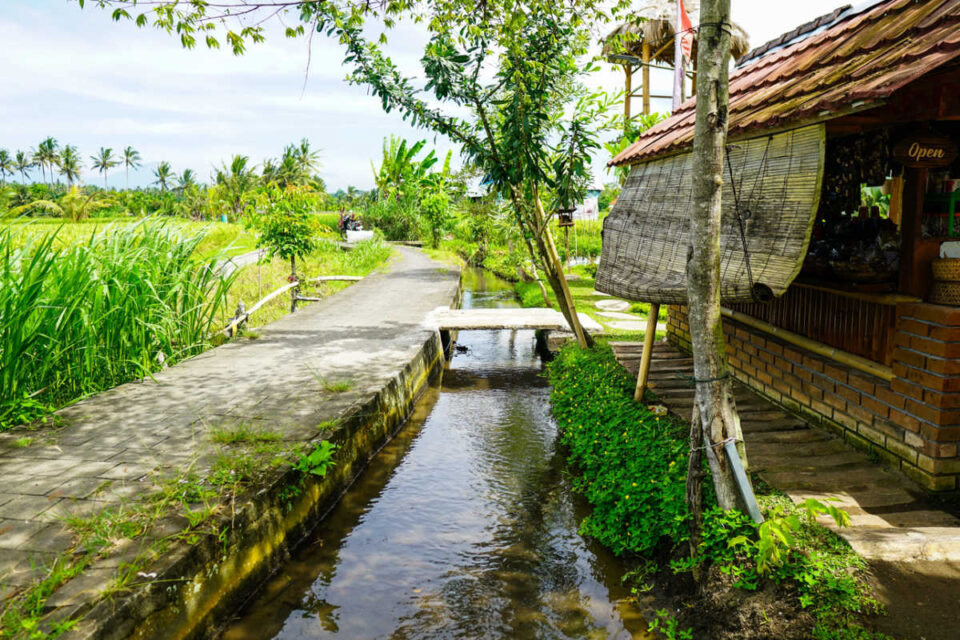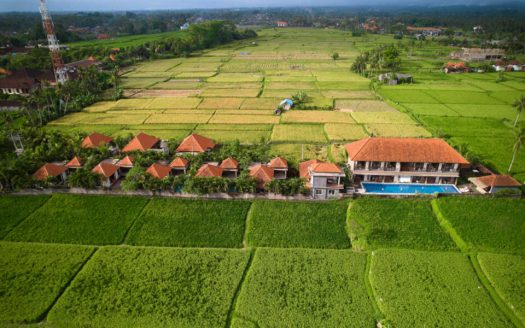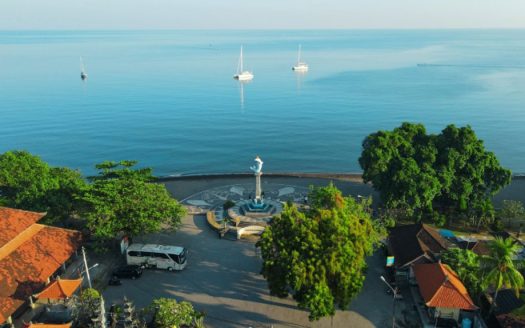Bali Land Conversion Law
New Bali Land Conversion Law – Leaders in Bali have confirmed that new policies will be brought into legislation to better control the conversion of agricultural land and wild landscapes on the island into commercial and residential properties.
The announcement comes as Bali remains in an official state of emergency following devastating floods in the last six days.
Data shows that Bali has been losing 1,000 hectares a year of agricultural land to the development of commercial buildings, including tourism villas, hotels, and tourism resorts.
As the official death toll from the floods climbs to 18 people, with this figure expected to rise further as recovery efforts continue, and more people are still reported missing, leaders are clear that policies need to change.
Main Article: Bali Land Conversion Law
Bali-based academic and journalist Ni Komang Pramudiasari recently published an op-ed in the Pacta Sunt Servanda Journal from the Faculty of Law and Social Sciences at Ganesha University of Education, focusing on the impact of tourism on agricultural land on the island.
In the piece titled ‘Tourism Shrinks Green Space: The Impact of Villa Expansion on Land Use Balance in Bali’, Pramudiasari proposes that rampant land conversion must be brought under control in order to reduce the risk of future flash flooding events and natural disasters, as seen in Bali in the last week, and increasingly so over the last three years.
Pramudisari shared, “Every year, Bali loses around 1,000 hectares of agricultural land due to land conversion. This conversion is driven by the rapid development of tourist accommodations such as villas and condotels.”
She outlines how land conversion threatens the existence of the UNESCO-protected Balinese subak, which is a totally unique and vital water and irrigation management system. This system has for centuries reflected the social, religious, and economic structure of Balinese society.
The subak system works in harmony with nature, effectively managing water during the rainy and dry seasons, preventing flooding or drought.
Regional Spatial Planning expert, I Nyoman Gede Maha Putra, spoke to reporters about what he has observed to be the most important root causes to focus on resolving moving forward.
He explained, “When the government says land conversion isn’t the cause, it’s not entirely wrong. But it’s also not entirely correct. Land conversion is one of the contributing factors to flooding.”
It is not exclusively the land conversion that is the issue, but the lack of supporting infrastructure development and the type of buildings that have been established on the landscape.
Bali Governor Wayan Koster has confirmed that by the end of the year, new regional bylaws will be drafted that will prohibit land conversion in Bali, as directed by the Indonesian Minister of Environment.
Governor Koster told reporters, “Starting this year, yes, there is already an instruction to all heads of districts and mayors across Bali.”
He added, “After handing the floods, we will meet again to ensure no more permits are issued for hotels, restaurants, or other facilities on productive land, especially rice fields.”
Many feel that while this is a step forward, it does not go far enough. While protecting the remaining agricultural landscape and green belt land is a good first step, serious action must be taken to level up infrastructure and support the subak system from the damage that has already been done.
Main Article: Bali Land Conversion Law
The new bylaws are expected to be bought into effect by the end of 2025, and based on initial comments from provincial leaders are aligned with statements made back in October 2024 that proposed a two-year moratorium banning the the development of accommodation, and food and beverage outlets in the Badung, Tabanan, Denpasar and Gianyar (Sarbagita) areas as ordered the Ministry of Tourism and backed by officials from the central government, as well as the provincial and regency governments of Bali.
Speaking to reporters during his visit to Bali in the wake of the floods, Indonesia’s Environmental Minister Hanif Faisal Nurofiq told reporters that these new bylaws are of the utmost importance moving forward. He explained, “This is also crucial for Bali’s tourism as the recent flooding has drawn serious attention.”
Adding “I actually told the governor last week that I really hope he will immediately stop the land conversions in Bali. This is extremely important.”
Minister Nurofiq concluded, “There should be no further expansion because Bali’s position is no longer strong enough to withstand natural calibrations. The governor will handle this carefully, not in a ‘frontal’ way.”
Record-Breaking Number Of Tourists 2025
Bali On Track To Welcome Record-Breaking Number Of Tourists By End Of 2025
Bali is on track to hit its tourism targets by the end of the year. While the low season has come around again, the island is on track to welcome more than 7 million international arrivals.
Bali Airport is still welcoming a huge number of foreign tourists even as the low season begins.
The latest travel data shows that I Gusti Ngurah Rai International Airport recorded more than 2.3 million passenger movements throughout August 2025.
According to analysts, this figure represents an increase of approximately 2.5% compared to the same period last year.
Of these 2.5 million passengers, 63% were international travellers, meaning that the majority of tourists visiting Bali, and arriving by air, are international tourists.
For those who are super curious, operational data shows that total passenger numbers in August 2025 were 2,334,879, which is a 2.5 percent increase compared to the 2,278,331 passengers in the same period in 2024.
Of that number, 1,471,378 were international passengers, while 863,501 were domestic passengers. The average daily passenger count reached 75,319 passengers, which averages 3,138 passengers per hour. The highest passenger count occurred on 1st August 2025, with 79,810 passengers.
Speaking to reporters, I Gusti Ngurah Rai Airport General Manager Ahmad Syaugi Shahab, assessed this achievement as a positive signal as well as a challenge to continue maintaining service quality. He shared, “We continue to strive to fulfill our commitment to maintaining service and smooth airport operations. With passenger and flight trends showing positive numbers, we are striving to improve, enhance, and strengthen our services to all our customers.”
Shahab called for all international passengers set to travel through Bali Airport to get up to speed on the new All Indonesia Arrivals Card App process, which is designed to help streamline travel for tourists. He explained, “We hope these service improvements and enhancements will provide added value and a better experience for passengers.”
The new All Indonesia App came into effect on 1st September 2025. This new app is an integrated system for tourists traveling to all destinations in Indonesia, including Bali. The All Indonesia App is a central point for tourist to complete their arrival declarations, including their health screening and customs checks.
The All Indonesia system has caused a little confusion with its name since it is not a complete one-stop shop for international arrivals. It is still the case that tourists must apply for their visa on the Official Indonesia eVisa website, where applications for extensions can also be processed.
In a press statement published at the launch of the new All Indonesia system, Indonesia Immigration explained, “The All Indonesia application is presented to simplify the declaration process of international passenger arrival, as well as provide an easier, faster, and safer travel experience.”
“Through this application, filling out the arrival form for immigration, customs, and excise, health, and quarantine arrival card is now integrated into one digital system.”
Adding “Passengers can fill in the All Indonesia 3 days before arriving in Indonesia, in the country of origin, and at the time of landing. Filling the declaration of arrival throughout all of Indonesia is free of charge.”
Main Article: Bali Land Conversion Law
The Acting Director General of Immigration, Yuldi Yusman, told reporters, “We appeal to all international flight passengers, both Indonesian and WNA (International Tourists), to report their arrival through this application.”
“This application is not only about convenience, but also about protecting our country. Every data you provide is the key to ensuring the security, health, and integrity of our borders.”
Prior to arriving in Bali, tourists must first apply for their eVisa. This process should be started around 2-3 weeks before the trip to leave more than enough time for the application to be completed and to troubleshoot any issues with the application.
Then tourist must pay their Bali Tourism Tax Levy via the LoveBali website or app, and finally, 3 days prior to travel, download the All Indonesia App and complete the arrivals card process.
Bali Tourism Tax Funds
Leaders Call For Bali Tourism Tax Funds To Be Spent Fixing Island’s Waterways To Reduce Future Flood Risk
Leaders in Bali are calling for funds generated through the Bali Tourism Tax Levy to be spent on supporting the island’s waterway management system, known as the subak.
This UNESCO-protected water management system has been used on the island for centuries, but rampant development over the last 50 years has hugely affected water flow, and the devastating floods of the last week are evidence of such.
In February 2024, the Bali Provincial Government introduced the Bali Tourism Tax Levy. This tourism tax is a IDR 150,000 fee applicable to all international tourists visiting Bali, including children.
While the first round of funds has been delivered to traditional village leaders to invest in their communities on a local level, some provincial leaders are calling for the next round of tourism tax funds.
To be spent on supporting both the subak system and waste management on the island.
Waste management issues in Bali are no secret. Yet, this week’s devastating flooding has brought into focus where the provincial government and local communities, as well as businesses on the island, need to be working together to ensure that the spatial planning and land use are not only strategised but also redeveloped in a sustainable way.
Originally, the Bali Tourism Tax Levy was set to help nurture nature, conserve culture, and level up infrastructure. Yet, 18 months into the scheme, it is hard to pinpoint compelling evidence of funds being used in an impactful way in any of these three areas.
The Head of the Denpasar Regional Financial and Asset Management Agency (BPKAD), Dr Ni Putu Kusumawati, explained that the Denpasar City Government has received emergency support funding from the Bali Provincial Government in the form of IDR 150 million for supporting the subak system and IDR 10 billion for waste management.
Though she told reporters that she ‘did not know’ if these Special Financial Assistance (BKK) funds contained funds generated from the Bali Tourism Tax Levy.
Speaking separately, the Mayor of Denpasar, IGN Jaya Negara, told reporters that funds from the Bali Tourism Tax Levy must be used to support the sustainability of tourism in Bali, by addressing waste, water, and road infrastructure issues that will also impact local communities.
He told reporters, “Ideally, if it is true that from 6 million tourists with [tourism tax fees] of IDR 150,000 per foreign national, there would be IDR 900 billion in annual funding. We hope to also receive funding from the [Bali tourism tax].”
Rampant development has been pinpointed as one of the root causes of the devastating flooding in Bali in the last week.
With more than 1,000 hectares of agricultural land converted into commercial buildings every year, over the last decade, the island has lost a dramatic amount of its agricultural landscape and, in turn, its natural water management system.
Support has been issued to communities across Bali from both the provincial and regency governments, as well as from community support groups, crowd-funding efforts, local NGOs, and local businesses.
Main Article: Bali Land Conversion Law
The clean-up effort will be intensive, though for many in Bali, life goes on around the devastation and recovery work. Many efforts in Denpasar, Kuta, Seminyak, and Canggu were hampered on Monday as more heavy rainfall fell across the central south of the island.
Now, when heavy rainfall arrives on the island, there is less land mass that can receive, retain, and channel the water.
This, coupled with a major waste management issue, ranging from overflowing landfills to plastic waste regularly being dumped into the subak system, and in some cases, waste and debris are already blocking water courses, means that when substantial rainfall arrives, the water has no other course than to flood.
Main Article: Bali Land Conversion Law
Main Article: Bali Land Conversion Law
All above articles are provided by “The Bali Sun“
Looking for a nice property in Bali’s famous Sanur area?


